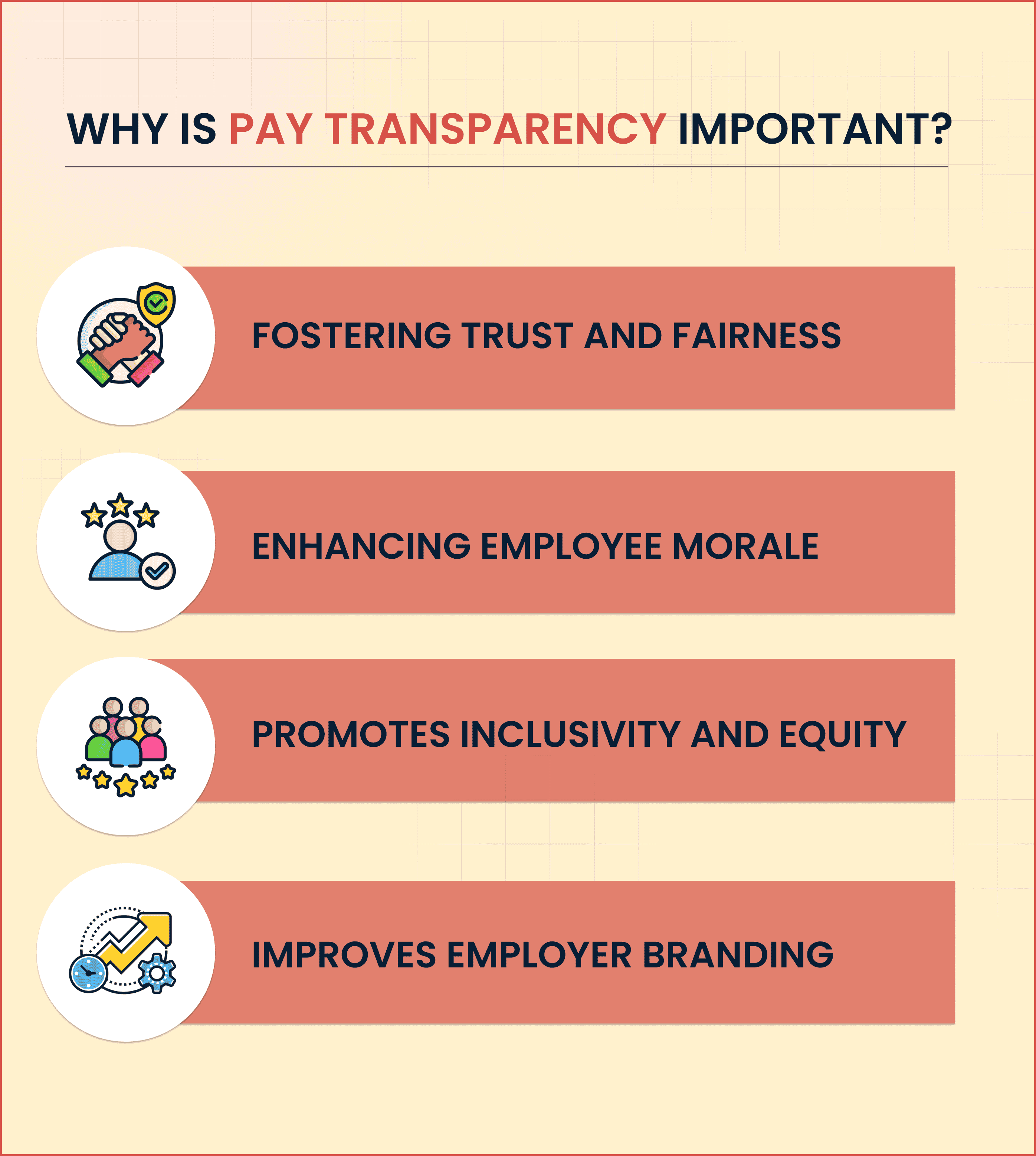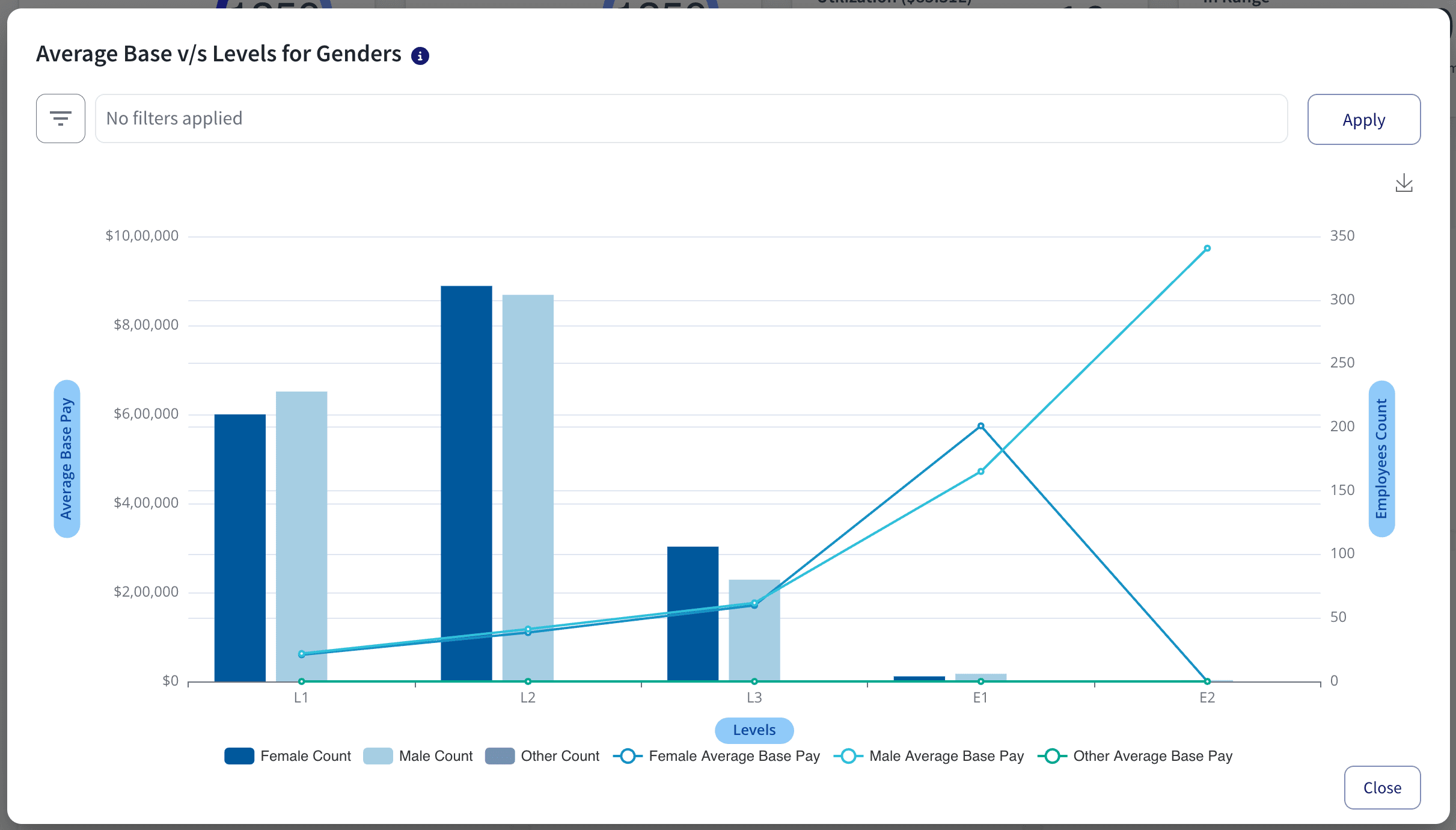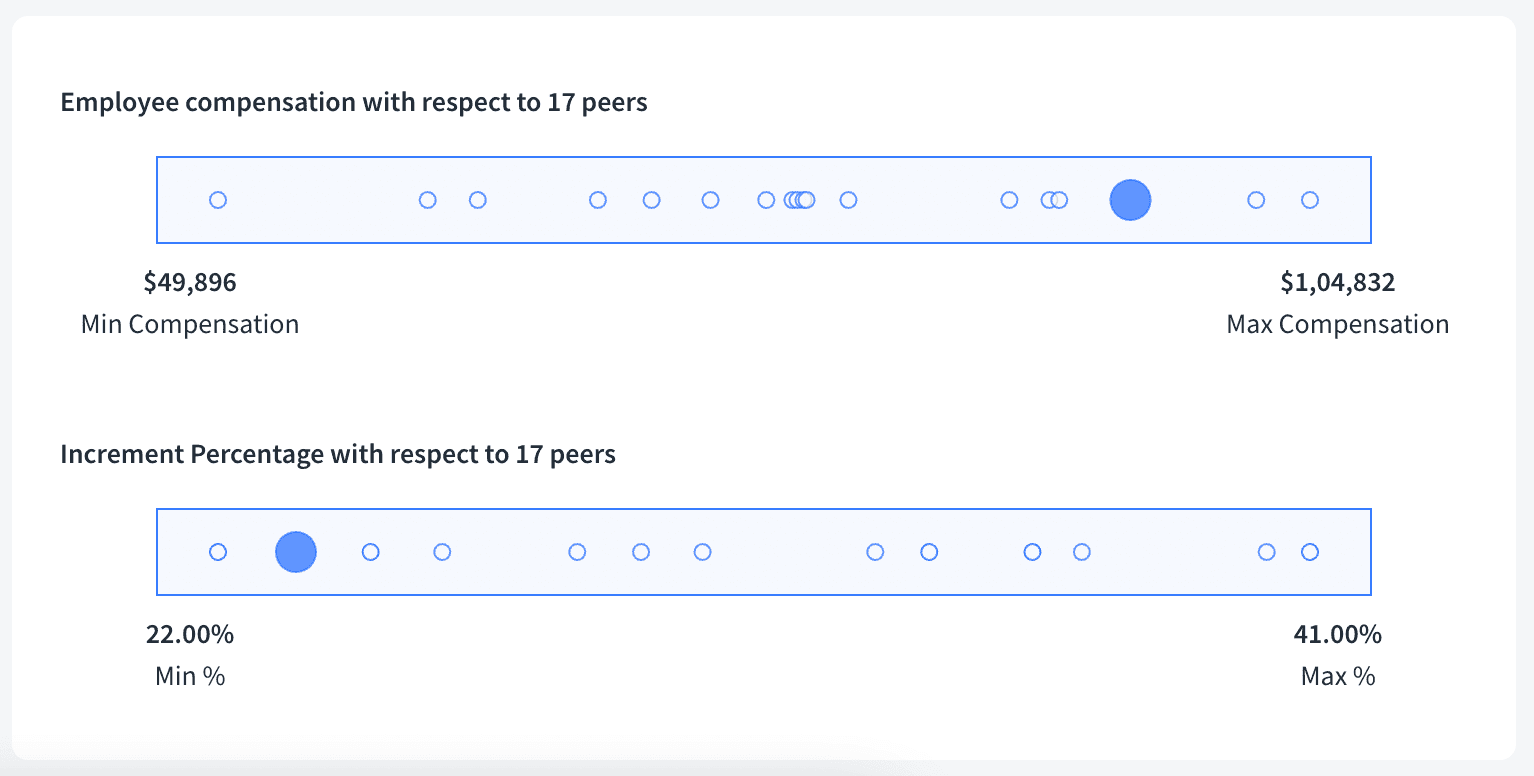
A study on the impact of pay raises on employee turnover highlights the critical role of pay transparency in the workplace. The data reveals that people of color are statistically less likely to receive a raise when they request one, compared to white men.
This disparity underscores the need for organizations to adopt transparent and equitable pay practices. It is important to adopt the practice of proper pay communication that will ensure pay transparency as well and promote fairness.
By adopting transparent pay practices, organisations can work towards a more inclusive workplace. So, we'll dive deep into pay transparency, exploring its importance, challenges, and best practices.
Pay transparency means sharing information regarding an employee’s payment rather openly and encouraging effective pay communication primarily as a means to encourage fairness. This includes in it the detailed breakdowns of the compensation plan for an employee and also the general salary bands that are offered for their job roles.
In most companies, it is seen that only part of the information regarding the pay of an employee is communicated or shared with the employee, whereas some other companies are clearer and disclose complete pay-related information, making it readily available for the employee to understand.
Doing this encourages fostering a more equitable working environment and company culture, improving retention of employees, and attracting top talent within the job applications. This disclosure of full information builds a sense of trust and fairness within the organisation.

There are some obvious benefits for a more pay-transparent workplace for the employees. Some important reasons why they are important are:
Ensuring fair pay and salary transparency helps foster a level of trust and fairness within the organisation. There is no space for any suspicion and confusion when it comes to the clarity of the compensation of an employee in an organisation creating a safer workplace for the employee.
Promotes a culture of fairness in the workplace
Builds trust across the organisation
Employees, when compensated fairly, do feel safer and more motivated to work harder for the company and also encourages employees to choose a company during an interview process. This also reduces turnover and promotes employee retention. This saves the company money when it comes to recruitment of new hires or other training and mentoring costs, also enhancing the overall employee morale. This also addresses the employee concerns and ensures job satisfaction.
Pay transparency as a part of the different forms of compensation and compensation strategy also helps organisations address all the disparities there are when it comes to the compensation that is paid to any employee and embrace the inclusion of diversity within the organisational culture. This makes a way to ensure pay equity within the organisation as well as contributing to transparency and fairness, which also further increases the overall employee engagement.
Salary transparency is one step towards ensuring pay equity within an organisation. This can also serve as a competitive advantage to the company, that is, having a transparent pay structure. Such practices attract more skilled employees and help retain them as well, increasing the overall business leader's branding.
The benefits of having a transparent pay structure in a company are made clearer above; now let's delve into understanding what the primary challenges of pay transparency are:
Job roles and levels within an organization are not the same, on the basis of which often there is a need for varied pay bands for the varied roles and individual employees, also considering factors like qualification, experience, and location of the employee.
So, balancing such needs requires very detailed understanding and justification for all of the payment variations to the different roles and wage gaps in employee compensation.
So, here, the challenge of creating such a well-structured salary band and communicating it is a time-consuming process because it does also require careful planning for the pay differences between salary range in job postings to be fair.
Such complete transparency when it comes to an employee's payment or compensation for job openings may sometimes seem rather invasive to some companies or employers, the ones who don't want to openly share every detail of the salary, to be precise.
There is a need to strike a valid balance between fostering transparency and openness and also striving to manage individual privacy preferences in compensation decisions wherein specific things are disclosed or layout certain disclosure requirements from the employer and some are selectively not disclosed.
Shifting from a more traditional pay structure to a more transparent one will result in a lot of internal resistance from employers, managers, or other team leaders who are used to pay practices.
This can create conflict with employees sometimes in understanding the justification for different pay ranges and disparities.
So, managing such a culture shift from such traditional pay structures that can be held responsible for disparities in wage scale to a clearer structure should be managed rather carefully.
There are specific regions that enforce certain laws on pay transparency and communication of the wide range of wage scale of maximum salary that also require companies to disclose certain salary information, or some have restrictions on such disclosure.
As laws vary significantly from one location to another, a failure to comply with the transparency requirements can result in legal consequences.
Setting clear objectives for pay transparency eases the process, and so what are your goals in adopting such transparency? This is an important question to be asked, like through compensation policies and strategies, if all of it is done to reduce the gender pay gap, to attract skilled employees and other job applicants, to retain existing employees, to improve employee engagement and loyalty, and so on.
It is important to conduct regular compensation audits for informational purposes to clearly identify disparities in the pay structures of the employees. Ensuring a system of pay that is fairer and more aligned with market standards.
It is important to communicate the need for pay transparency like trust and fairness in a workplace to the employees as well as the employers and new hires with job offers. Such description of benefits encourages managers to discuss openly and justify their payment decisions which gives clarity about an employee's compensation in their current position.
Make all of the necessary information available regarding pay structures for the employees or potential employee to access, building clarity and fairness in everything. Such access to salary information may be about individual salaries of employees or their annual salary or other wage history ensures fairness and wage transparency.
Assessing regularly the approach of pay transparency and refining as per the feedback given by the employees in their initial interviews or in regular feedback when they will ensure the successful crafting of an effective pay transparency strategy this also helps reduce gender wage gaps.
So, since Pay Transparency is also like the first step towards bridging the pay gap, it is rather important to note that there are complexities and challenges that must be dealt with by careful planning and managing these transparent pay practices effectively in compensation packages.
CompUp can most certainly help you do just that: deal with these challenges managing these transparent pay practices effectively. It plays a pivotal role in addressing and articulating ways to deal with the pay transparency practices effectively.



By leveraging tools like CompUp, businesses can take the guesswork out of fair compensation for employees at any job level and create pay structures that reflect both equality and equity, making the workplace more inclusive.
Pay transparency is clearly something that must be navigated rather carefully, when it is done right, it can be a real game-changer in the workplace. So, by being able to get a more open and structured approach to the compensation of an employee, this will also help companies instill trust and loyalty in the hearts of the employees in different job positions.
Try the platform today to understand how CompUp can help you make data-driven and ensure transparency in your payment structure.
Revolutionizing Pay Strategies: Don't Miss Our Latest Blogs on Compensation Benchmarking